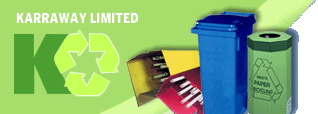

| Home | FAQs | Enquiry form | Contact us | |
 |
 |
Hazardous Waste Information |
|
New legislation on how we deal with hazardous waste has come into force, and more is still to come. So it is important that you know the facts and are prepared for how this may impact on you. In January 2002 changes to the Hazardous Waste List were applied in the EU, this resulted in an additional 180 wastes classified hazardous. Small businesses, in particular - even some larger ones will now find themselves dealing with hazardous waste for the first time. From 16th July 2004 the co-disposal of hazardous waste with non hazardous waste at the same landfill site was banned. As of 16th July 2005 the Waste Acceptance Criteria (WAC) will come into force. Producers of hazardous waste will have to make sure that waste to landfill meets the WAC. It is therefore essential that businesses can describe exactly what their waste contains, this 'characterisation' will determine what can be done to minimise it, ease its recovery or ensure its safe disposal. Do you produce hazardous waste?If you are a business and you produce waste, your waste could be hazardous. Determining whether your waste is hazardous must be done by assessing the content of your waste streams. If you are not sure whether you produce hazardous waste or not, or to find out what constitutes a hazardous property you ought to check on the website of your Environment Agency or call your local office for advice in this regard. The regulator In England and Wales, this is The Environment Agency, 08708 506 506. And in Northern Ireland it is the Environment and Heritage Service, Northern Ireland (EHSNI), 028 9054 6463. The Environment Agency can:
What must you do? WHAT IS HAZARDOUS WASTE?Waste is hazardous when it contains substances or has properties that might make it harmful to human health or the environment. The term 'hazardous' does not always mean that such waste is immediately toxic, though some can be. By improving the way in which we manage all wastes classified as hazardous we reduce the risk they might pose now and in the future. For further information please visit the hazardous waste section on the Environment Agency's web site. Classification of hazardous wasteHazardous waste is defined in the Hazardous Waste List which is now incorporated in the European Waste Catalogue (EWC). As mentioned earlier in January 2002 changes to the Hazardous Waste List were applied in the EU, this resulted in an additional 180 wastes now classified hazardous. This means that the amount of hazardous waste the UK produces will grow. For example, TVs, fluorescent tubes and pesticides are now classified as hazardous waste. Wastes on the list are defined as Absolute entries or Mirror entries. Absolute entry Mirror entry However, if a hazardous component can be identified and removed, the remaining waste can then become non-hazardous, whilst the removed component remains hazardous. For example, when a TV is disposed, the cathode ray tube, a hazardous component, can be removed to make the TV a nonhazardous waste. IS MY WASTE HAZARDOUS AND WHAT DO I NEED TO DO WITH IT?Is my waste hazardous? In order to assess this, you should;
Duty of care In order to dispose of hazardous waste you must:
For further information on Duty of care please ring Karraway Limited on 020 8236 0108 or email your questions to info@karraway.co.uk Furthermore, The Environment Agency has produced a report that outlines the challenges faced in managing hazardous waste, Hazardous waste - a growing challenge. OTHER NEWS ITEMS:
|
|||||||||
Please contact us for further details:
Karraway Limited. 1 Folly Close, Radlett, Hertfordshire, WD7 8DR Document and data destruction | Paper and office recycling | Toner cartridge recycling and disposal |
||||||||||
 |